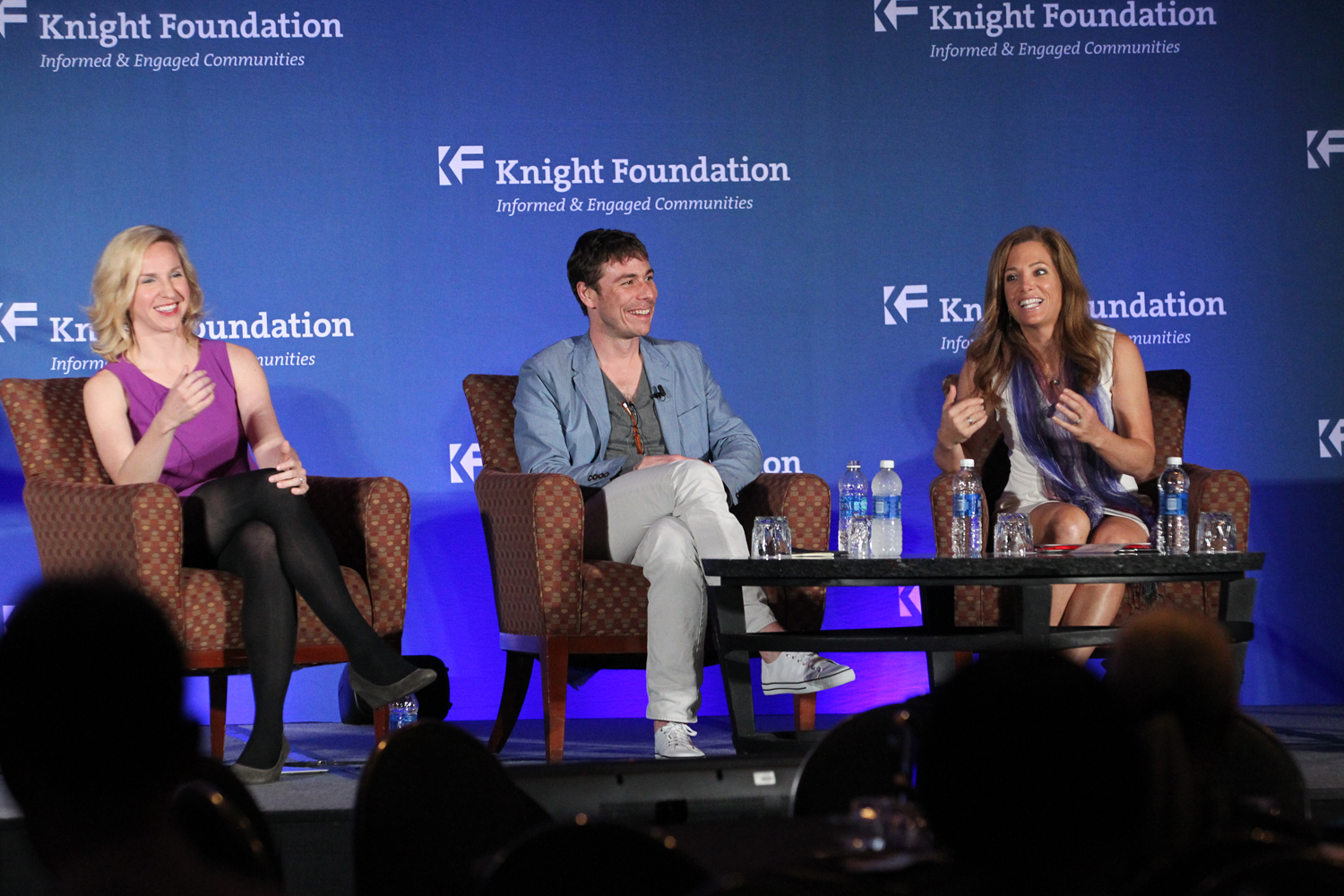
Going from sustainability to “thrivability”: success stories from Sundance, The Texas Tribune and KCRW
Sustainability is formally defined as the “capacity to endure,” but non-profits know that simply enduring isn’t enough. Instead, the real goal for media ventures or collaborations should be something like “thrivability,” says Knight Foundation’s John Bracken. At this year’s Media Learning Seminar, leaders from KCRW, the NPR member station in Los Angeles; the Sundance Institute, which puts on the fabled festival; and The Texas Tribune, a digital news startup in Austin, shared what they learned on the path to “thrivability.” Big brands make you bigger. Sundance partners with the online crowd-funding platform, Kickstarter, to help filmmakers get their work seen and distributed. “Big brands amplify and magnify what artists are doing already,” said Joseph Beyer, director of digital initiatives at Sundance. The Kickstarter partnership showed Sundance the power of working with an established brand and taught it a lesson about engagement. “The dollar amounts are less important than the emotional connection with the supporters,” he said. Consider a live events strategy. The Texas Tribune launched in 2009 with philanthropy representing more than 90% of its funding, but it has now diversified its revenue streams among five major sources. Live, in-person events draw more than 20% of its revenue. These events, which include weekly breakfasts that are free and open to the public and an annual three-day public policy festival, draw major corporate underwriting. Last year, the Tribune took in $850,000 from its events, and mostly from the underwriting. “This is almost all from putting your name on a backdrop, and not ticket sales,” said Tribune editor Emily Ramshaw. Additionally, the idea of being invited to events helps the organization engage the community, a key relationship for sustainability. Keep your brand relevant. The media, technology and audience landscape changes quickly. All three organization leaders say your brand and business model must aggressively adapt to that change. To make sure KCRW is a brand ready for the future, it defines itself as far more than a radio station. It has instead moved to position itself a source of music discovery, and a source of creativity, art, culture, news and information. “We have as many if not more listeners on our web and mobile apps than our traditional radio signal,” said KCRW General Manager Jennifer Ferro. Experiment with new technologies. “It’s way too fluid and dynamic a media landscape to not be trying things,” said Beyer. “If you’re not participating, you can’t learn about the relevancy of a new technology or device to your brand.” Sundance has a footprint on every major social media platform as part of its experimentation with new products. Google+, for example, didn’t seem to make sense until it experimented with Hangouts, which have become a great, lo-fi way to engage with film enthusiasts. Meanwhile, KCRW spent a lot of energy developing an innovative iPad app that’s not branded as KCRW but instead called “Music Mine” to grab people who don’t have a previous relationship with its radio signal. More than 100,000 have now downloaded the app. Get creative with finding new donors. The Texas Tribune covers public policy and politics, so it mined Federal Election Commission data to see potential political donors its fundraisers could approach. “We thought, these people care about politics and policy and they’re already opening their pocketbooks, so maybe they care about public media,” Ramshaw said. “It was a great bet.” Elise Hu is a digital editor at NPR and blogging this event for Knight. You can follow the Media Learning Seminar on Twitter @knightfdn or with the hashtag #infoneeds.
Recent Content
-
Communitiesarticle ·
-
Communitiesarticle ·
-
Communitiesarticle ·


